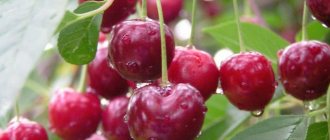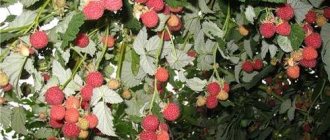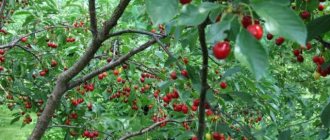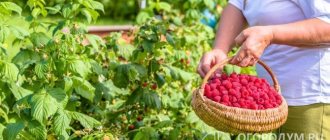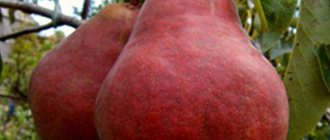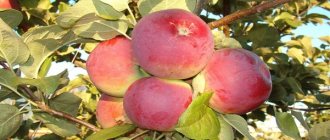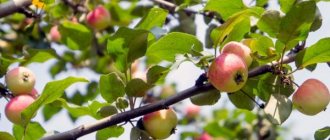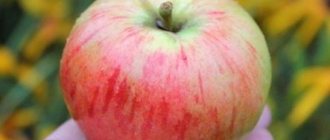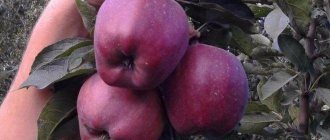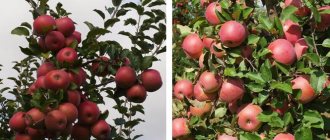Elizaveta 2 is one of the most popular remontant varieties of garden strawberries. With proper care, the crop produces three waves of harvest. Let's find out why this variety is attractive to gardeners, and how to grow large and sweet berries in a temperate climate.
garden strawberry variety "Elizabeth 2"
tasty and aromatic strawberries of the “Elizabeth 2” variety can be collected from the bush until autumn
garden strawberry variety "Elizabeth 2" is characterized by good keeping quality and suitability for transportation
Description of strawberry and its origin
Elizabeth 2 grows safely in the southern and central regions of Russia. This variety was bred in 2001 at the Don Nursery. Having successfully tested in different climatic zones, the variety confirmed its adaptation to the changeable climate of the middle zone. The variety is not afraid of winter temperatures, spring frosts and prolonged rains - everything that usually interferes with the normal fruiting of garden strawberries in a temperate climate.
Brief botanical description of the Elizabeth 2 variety:
- Bushes. Powerful and spreading, well leafed.
- Leaves. Large, shiny edges are ribbed. They protect fruits well from precipitation and contamination. The color of the leaves is rich – emerald green.
- Flowers. White, core – bright yellow.
- Fruit. Dense, “varnished”. Large, weighing 40-50 g. With skillful agricultural technology, larger berries are obtained - 60-65 g. Some record-breaking specimens reach 100 g. Color - bright red. The shape is a tuberous cone. The taste is sweet, dessert, the aroma has honey notes. The seeds are beige in color, planted deep.
About the variety
Strawberry Elizaveta 2 was developed in Russia about 20 years ago. In 2004, the variety was officially registered and entered into the State Register of the Russian Federation. Zoning is the entire territory of our country.
Elizaveta 2 successfully grows in warm climate zones and perfectly adapts to the weather in the central and northern regions of Russia. With proper care, the plant calmly tolerates winter cold, spring frosts, prolonged rains and persistent heat - this is evidenced by numerous reviews from gardeners.
The variety is not susceptible to pests and is resistant to various types of diseases. In general, the remontant strawberry Elizaveta 2 responds well to all those factors that are detrimental to ordinary varieties of garden strawberries.
The most delicious and largest berries are those picked in the first wave of fruiting, in June-July. Subsequent harvests are slightly less juicy, but still aromatic and sweet fruits
Pros and cons of the variety
Advantages of the Elizabeth variety:
- The fruits are well transported and stored. The fruits are moderately dense, they are practically not affected by abundant watering.
- Early ripening.
- Picking berries throughout the summer.
- The berries have an excellent presentation and good taste - they are in demand in the market.
- High immunity to diseases.
Flaws:
- After 2-3 years of cultivation, the yield decreases.
- Demanding on growing conditions.
Elizabeth 2 produces good harvests only on fertile soils fertilized with modern fertilizers.
Fruiting dates
Strawberry Queen Elizabeth 2 is one of the earliest remontant species. The buds on its plants for flowering in spring are formed in autumn. This is the reason for its early flowering. By releasing the berries early, she puts her energy into laying flower buds (they bear fruit in July).
More on the topic: Strawberry Marmalade: description of the variety
Then - in September-October. Therefore, from each bush you can collect about 3 kg of berries. In the spring it is 600-700 g, in July-November the rest is removed. Often autumn berries are superior to early ones in taste and aroma.
Interestingly, during the period of minor autumn frosts, its fruits freeze slightly, and if it is warm during the day, they not only thaw, but also continue to ripen.
The harvest occurs almost in the spring, at the same time as regular summer strawberries. But in this variety it extends until winter. Along with ripening, new flowering stems grow.
Experienced gardeners who grow Queen Elizabeth say that with each new wave of fruiting the berries increase in size. They are large in the queen berry, sometimes weighing up to 90-100 g. They are heavy because they do not have voids inside.
Characteristics of Elizabeth 2
The main advantage of the Elizabeth 2 variety is its remontability. It bears fruit almost continuously. The first berries appear in early summer, and the fruiting season lasts until mid-autumn. The most delicious harvest is harvested on hot summer days, in June-July. September berries have less sweetness.
The berries ripen in waves. Several crops are harvested during the season:
- the first - in early June;
- the second - in the first ten days of July;
- the third - in mid-August.
The pros and cons of the “Elizabeth 2” variety are presented in the video below:
Characteristics of the Elizabeth 2 variety:
| Parameter | Description |
| Productivity | in open ground - 3.5 kg per 1 sq. m, under film and in greenhouses - up to 10 kg per 1 sq. m, one bush produces 2-3 kg of berries per season |
| Resistance to diseases and pests | high |
| Drought resistance | average |
| Frost resistance | average, up to minus 23 degrees, can freeze in severe frosts (even under film and sawdust) |
| Ripening time | from the end of May to the 20th of September |
| Taste characteristics | the taste is sweet, dessert, tasting score - 4.7 out of 5, sourness appears in the fall or with incomplete ripening |
| Aroma | nice, strawberry |
| Transportability | good, the pulp is dense, the berries do not release juice during transportation |
| Purpose | universal - eaten fresh, prepared (can be frozen, cooked into compotes - the berries do not fall apart when cooked) |
If you do not remove the peduncles, this remontant variety forms 3-5 mustaches, each with 2-3 rosettes.
Post-planting care
Growing strawberries involves weeding, grounding, loosening the soil between rows, fertilizing and watering, preventing or treating diseases and pests, as well as pruning bushes and preparing the area for winter. When planting strawberries in the fall, the bushes are covered with film to protect them from the oncoming cold weather. It is very important to feed the plant during this period.
Standard methods of post-planting care for strawberries include:
- regular loosening of the soil;
- weed removal;
- soil mulching.
A protective layer of soil is poured between the beds. For these purposes, humus, straw or sawdust are used. To obtain a good harvest, the first spring flower stalks are cut off.
Landing Features
If purchased seedlings are used for planting, purchase them in the spring or summer - in the second half. They buy garden strawberry bushes from nurseries or specialized stores. The seedlings should not have any suspicious symptoms - spots or other damage. Planting is extended - Elizabeth 2 can be planted at any time from early spring to September.
Select a site for planting:
- flat, slight slope allowed;
- with good lighting;
- not blown by winds.
The soil for planting is prepared in advance:
- the bed is dug up, removing the roots of the weeds;
- acidic soils are deoxidized with lime for three years before planting, adding per 1 sq. m 300 g of ash;
- during digging - 1-2 months before planting, add a fertile mixture to the soil: humus - 1 bucket;
- peat – 1 bucket;
- superphosphate – 40 g;
- potash fertilizers – 20 g.
Select the appropriate landing option:
- The bushes are planted at intervals of 15-20 cm, row spacing is 60-80 cm.
- The bushes are planted in a garden bed in 2 rows. The interval between adjacent ridges is 70 cm, between rows - 40 cm, between bushes - 20 cm.
When planting on both sides, a cover with black film is often used to cover the row spacing. This agricultural technique retains moisture in the soil and prevents weeds from growing.
Boarding order:
- Dig small holes, 7-8 cm deep.
- Pour non-cold water into the wells - about 0.5 liters.
- Form a small mound inside the hole.
- When lowering the bush into the hole, carefully straighten the roots.
- Cover the roots with soil so that the root bud is above the surface of the soil.
- Pour 0.5 liters of water under each planted bush. Mulch the soil around the bushes with humus or other mulch.
The planted seedlings must have at least 5 full leaves, otherwise the plant has little chance of taking root.
Planting strawberries of the Queen Elizabeth variety in the garden
Strawberries of the Elizabeth variety are a demanding crop that places high demands on soil fertility, so before planting, the land must be carefully prepared. The soil should be dug up, all roots removed, large clods of earth broken up and humus added in an amount of 7-8 kg per 1 square meter. For strawberries of the Queen Elizabeth variety and its genetically identical form, the presence of mineral fertilizers in the soil is important.
Phosphorus is added to the soil during planting, and nitrogen and potassium fertilizers should be applied during the growing season of the plant.
When planting strawberries in the ground, the following dimensions must be maintained:
- distance between plants - 20-25 cm;
- distance between rows - 65-70 cm;
- with a two-line planting, the distance between two rows is 25-30cm.
A prerequisite when planting strawberries of any variety is to place the rosette directly above the ground.
Burying the rosette into the ground, as well as placing it high above the ground, will lead to a lack of harvest. After planting, the strawberries should be thoroughly watered, and the soil around the plant should be compacted slightly to remove any voids that have formed. This technique will allow the roots to take root faster.
How to care for Elizabeth 2?
The Elizabeth 2 variety requires a little more attention than non-repairing garden strawberries - after all, this plant produces three harvests per season instead of one. In order for the bushes to have enough strength to bear fruit three times, it is important to provide them with good watering and fertilizing.
Watering
Irrigation features:
- Watering should be frequent but small.
- Water should evenly saturate the soil without creating a favorable environment for root rot.
- During the hot period, the frequency of watering increases.
- It is not recommended to water strawberries by sprinkling - this can cause fruit rot.
- The optimal method of watering is drip irrigation.
- When watering, the soil should be moistened to the entire depth of the roots - approximately 30 cm.
- Water consumption is determined each time based on the condition of the soil. If, for example, the soil is dry to a depth of 2 cm, 0.5-1 liters of water is sufficient. If you need to completely wet the soil - to the depth of the roots, pour 3-5 liters under each bush.
Lack of water negatively affects the berries - they grow small, dry, and taste bland.
Feeding
To harvest good strawberry crops, it is important to feed the plants with nitrogen, phosphorus and potassium in a timely manner. Fertilizers, one of which is fed to the plants at the root every two weeks:
- agrofoska;
- sodium or calcium nitrate;
- superphosphate;
- organic matter - humus, compost;
- ash;
- herbal infusions.
You can find out more information about spring feeding of strawberries from this article.
Foliar feeding is recommended. They are especially useful during fruiting. Plants can be treated:
- A mixture of boric acid (1 g), potassium nitrate (2 g) and potassium permanganate (2 g). The indicated doses are dissolved in 1 liter of water.
- Wood ash solution. One glass of ash is poured into 1 liter of boiling water. The cooled and strained infusion is used for spraying.
- Yeast solution. 1 kg is dissolved in 5 liters of water. The yeast is kept for 24 hours, 0.5 liters of starter is dissolved in 10 liters of water.
Spray garden strawberries in the evenings to prevent the sun from burning the wet leaves.
Loosening
Remontant strawberries require regular loosening. Moreover, it is recommended to loosen the soil before each watering - then the moisture will penetrate faster to the root system. During loosening, weeds are removed, and at the same time you can add organic fertilizers - it is difficult to overfeed garden strawberries with them. After loosening the soil, mulch it.
Strawberry propagation
Variety Elizabeth 2, like any garden strawberry, is propagated in three ways:
- Seeds. Prepare containers no more than 12 cm high and fill them with earth. Seeds soaked in water are slightly buried in the soil. Cover the containers with film or glass. Every day the plantings are ventilated by lifting the glass/film for 10 minutes. The soil is moistened as necessary. After half a month, the seeds will germinate, ventilation is increased to half an hour. After the first leaves appear, the plants are planted in separate containers. Half a month before planting in the ground, the plants are hardened off by taking them outside. From the moment the first shoots appear until planting, 4 months pass.
- Usami. Select bushes that produce the largest yields. The whiskers on which rosettes have formed are sprinkled with earth. When the rosettes take root, they are replanted. This is usually done at the end of July.
- Dividing the bush. When young plants are planted, they have one growing point, and then there are many of them, sometimes more than a dozen. Therefore, the bush can be easily disassembled into several bushes. This is usually done in spring or summer. The bushes obtained by division are immediately planted in the ground. Experienced gardeners recommend first planting the cuttings in the shade, and a month later - in the beds.
Read all about growing remontant strawberries from seeds here.
Diseases, pests and their control
Immunity to most diseases that affect garden strawberries is one of the main advantages of the Elizabeth 2 variety. But it doesn’t hurt to be on the safe side; it is recommended to carry out several sprayings as a preventive measure. After the snow melts, planting garden strawberries is sprayed with a solution of copper sulfate or Bordeaux mixture 1%.
To repel pests, the free space between the strawberry beds is planted with garlic or flowers with a strong smell - marigolds or nasturtiums.
Pests of garden strawberries and measures to combat them:
| Pests/diseases | How to fight? |
| Gray rot | Spraying with iodine solution - 3 times at intervals of every 10 days (10 ml per bucket). |
| Powdery mildew | Spraying with a solution of colloidal sulfur (per 10 l - 80 g). |
| Strawberry nematode | Remove the plants along with a lump of soil. |
| Slugs | Sprinkling the soil between the rows with fluff lime or ash. |
| Strawberry mite | Spraying with Agravertine (2 ml per 1 liter of water). |
Reviews
★★★★★
Elena R., Astrakhan. The variety does not degenerate as quickly as other remontant ones, but I still rejuvenate the plantings every year.
After a good seasonal harvest, I harvest another one in the spring. Then I remove all the bushes, plant rye on the plot, and at the end of summer in this place, after digging, I plant rosettes from the bushes planted last year. ★★★★★
Gerasim I., Barnaul. An early variety, the berries are large and beautiful.
But the taste is not good enough. My wife and I put the berries into processing. Perhaps the berries were tasteless due to the rainy summer. Hide
Add your review
To get three harvests in a season, you have to make a little fuss - remontant varieties need increased attention. The Elizaveta 2 variety successfully combines excellent commercial qualities with high productivity - the variety is good for amateur cultivation, including for sale.
0
0
Copy link
